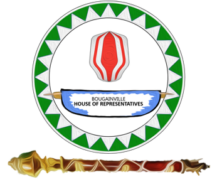A “Standing Orders Committee” typically refers to a parliamentary or legislative committee that is responsible for reviewing, proposing, and amending the standing orders of the legislative body. Standing orders are the rules and procedures that govern the internal operations and conduct of business within a parliamentary assembly or congress.
Here are key responsibilities and functions associated with a Standing Orders Committee:
- Review and Amendment of Standing Orders:
- The primary responsibility of the committee is to review the existing standing orders of the legislative body and propose amendments or revisions as needed. This may include changes to rules related to debates, voting procedures, committee structures, and other parliamentary processes.
- Procedural Advice:
- Providing procedural advice to members of the legislative body on matters related to the interpretation and application of standing orders. This ensures that parliamentary proceedings are conducted in accordance with established rules.
- New Standing Orders:
- Proposing new standing orders or rules when necessary, especially in response to changes in the legislative environment, legal requirements, or emerging issues that need specific procedural guidelines.
- Committee Structure:
- Determining the composition and functions of other committees within the legislative body. This may involve recommending the establishment of new committees, changes to committee mandates, or dissolution of committees.
- Conflict Resolution:
- Addressing disputes or conflicts related to the interpretation or application of standing orders. The committee may provide resolutions or interpretations to ensure consistency and fairness in parliamentary proceedings.
- Parliamentary Efficiency:
- Seeking ways to improve the efficiency and effectiveness of parliamentary proceedings. This could involve proposing changes to streamline debates, voting processes, or committee workflows.
- Public Consultation:
- Engaging in consultation with members of the legislative body and, in some cases, the public to gather input on proposed changes to standing orders. This ensures a transparent and inclusive process.
- Training and Orientation:
- Providing training sessions or orientation programs for newly elected members to familiarize them with the standing orders and parliamentary procedures.
- Rule Enforcement:
- Ensuring that members adhere to the standing orders during parliamentary sessions. This may involve advising the presiding officer on points of order raised during debates.
The specific composition, functions, and powers of a Standing Orders Committee may vary depending on the parliamentary system and the rules of the specific legislative body. For the most accurate and up-to-date information, it is recommended to refer to the official standing orders or rules of procedure of the relevant legislative assembly.
